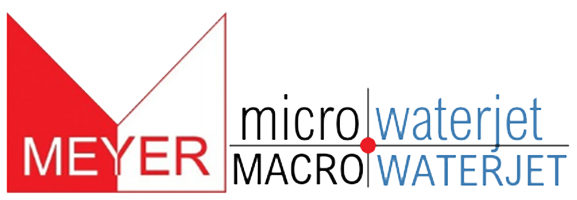Heat Affected Zones: What they Are and How to Eliminate Them
Micro Waterjet
Get Your Custom Solution
Call 704-948-1223 or Schedule A Free Consultation
"*" indicates required fields
Thermal cutting methods induce heat affected zones that can negatively impact your final product. Read more to learn how our Microwaterjet® process avoids affected zones and minimizes any material composition changes.
What is the Heat Affected Zone (HAZ) and Why Does It Matter?
The Heat Affected Zone, or “HAZ”, is a region of a material that is compromised during a thermal cutting process, the properties of which are changed by the presence of intense heat.
This zone typically surrounds the cut line, and it experiences a thermal cycle which can alter the molecular structure of the original material.
For any projects where material integrity and precision are crucial, heat affected zones pose a major problem. While processes like laser, plasma cutting and wire EDM cutting are fast, the higher temperatures involved make HAZs inevitable.
What are the Effects of HAZ’s?
Heat affected zones can have serious and often irreversible effects on a part’s mechanical properties, potentially compromising the final product and complicating production. Some of these effects include:
- Changes in Hardness: Heat can make the material in the HAZ harder and more brittle, increasing its susceptibility to cracking and making it more difficult to machine after cutting.
- Reduced Strength: In aluminum alloys, the heat can soften the material, leading to a significant decrease in tensile strength and a weaker final part.
- Corrosion Vulnerability: In materials like stainless steel, the heat can alter the molecular structure, making the HAZ more susceptible to corrosion and rust.
- Added Production Costs: The issues caused by HAZ often require extensive, time-consuming, and costly post-processing steps to fix, such as grinding or heat treatment, if the part is even salvageable.
These effects prolong your production process by adding extra time to fix them, if the damage is repairable.
How Do Conventional Cutting Methods Result In HAZ’s?
Laser cutting involves high frequency laser beams that use extreme temperatures to remove material. Laser cutting creates a heat affected zone that may require extensive post-processing that is costly and time consuming.
Wire EDM Cutting utilizes electrical sparks for the wire to erode material. This results in a HAZ in the form of a recast layer.
How Does The Microwaterjet® Process Avoid HAZ’s?
Our Microwaterjet® processes avoids HAZ’s by using a mechanical, “cold” cutting process. Using abrasive particles accelerated through water to remove material preserves your product while providing you with the precise results needed for your project.
Microwaterjet®: Our Cold-Cutting Solution
Our Microwaterjet® process removes the risk of HAZs entirely because it is a mechanical, or “cold,” cutting process. Instead of heating components to extreme temperatures to remove material, our process uses a high-pressure stream of water with abrasive particles to cut precisely through materials. This means:
- No Heat Distortion: The material’s original properties are preserved, eliminating any risk of thermal stress, cracking, or discoloration.
- Precision and Quality: You get clean, precise cuts with smooth edges, which require little to no post-processing.
- Material Integrity: The finished part maintains its original tensile strength, corrosion resistance, and microstructure.
By eliminating HAZ at the source, our Microwaterjet® cutting process saves you time and money, ensuring the final product is flawless right off the machine. Contact us today to learn how our Microwaterjet® process can provide a solution for your cutting needs.
Frequently Asked Questions about Heat Affected Zones
The heat affected zone can often be visually identified by a discoloration or change in surface near the cut line. For a more technical assessment, a cross-section of the part can be analyzed under a microscope to reveal changes in a given material’s microstructure.
There are a few ways to mitigate or get rid of a heat affected zone, but these require additional, potentially costly, processes. Common methods include machining and/or grinding the affected area away, or using post-cutting heat treatment to renormalize the material properties.
Ready for a Cooler Solution?
At Meyer Tool Huntersville, we know how HAZ’s complicate your production process and stop you from meeting your deadlines. Contact us today to learn how our Microwaterjet® process can provide a solution for your cutting needs.
